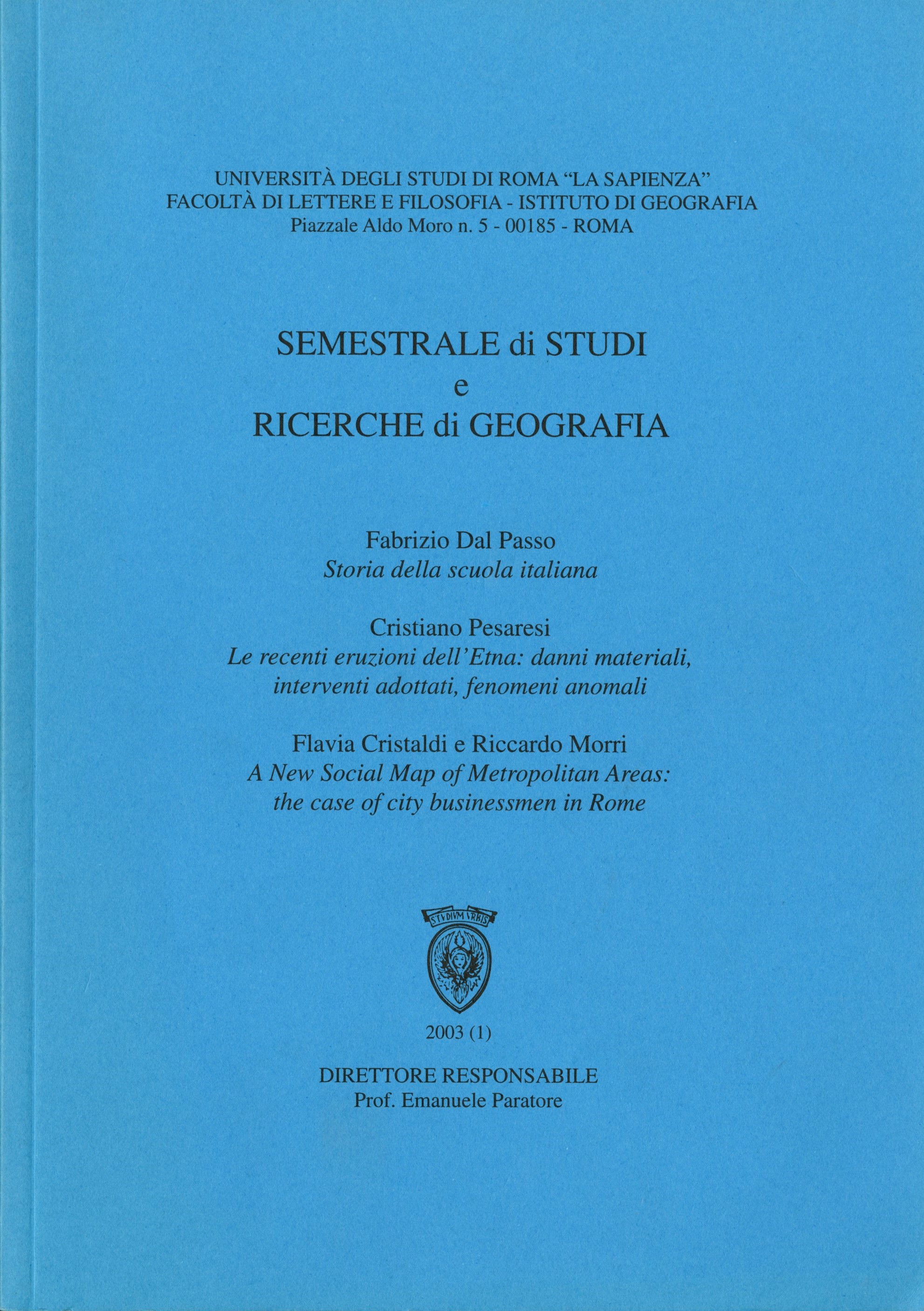A New Social Map of Metropolitan Areas: the case of city businessmen in Rame
DOI :
https://doi.org/10.13133/1125-5218.15362Résumé
Contemporary metropolises are not defined in the international urban context by their territorial dimensions, population's density or high skyline, but by studying a group of phenomena related to processes and quality of production, cultural patterns and, above all, human relations throughout space. Geographers, sociologists, planners analyse the metropolitan "texture" and they try to describe processes which involve rnillions of people, expressing transformations of society and underlining in each case the cultural topics. So it was possible to speak of an ecologica! city (WHO, 1992; Alberti et al., 1994) directed toward a sustainable development', a technological city, where innovation leads the organisation of social life (Castells, 1989; Salomon et al., 1994), a multiethnic city, where social exclusion and spatial segregation take piace (Wieviorka, 1994), a global city, with an economie system that push_es low-income people (with a lot of women) to take informai jobs, increasing social problems (Sassen, 1991 ), a retail city, with diffusi on of shopping malls and "no-places" without specific identity (Augé, 1992), and a city with 4 populations (Martinotti, 1993; 1996), where studies highlight social characters who live together in metropolitan places, but according to different spaces.Téléchargements
Numéro
Rubrique
Articoli
Licence
Gli autori che pubblicano su questa rivista accettano le seguenti condizioni:- Gli autori mantengono i diritti sulla loro opera e cedono alla rivista il diritto di prima pubblicazione dell'opera, contemporaneamente licenziata sotto una Licenza Creative Commons - Attribuzione che permette ad altri di condividere l'opera indicando la paternità intellettuale e la prima pubblicazione su questa rivista.
- Gli autori possono aderire ad altri accordi di licenza non esclusiva per la distribuzione della versione dell'opera pubblicata (es. depositarla in un archivio istituzionale o pubblicarla in una monografia), a patto di indicare che la prima pubblicazione è avvenuta su questa rivista.
- Gli autori possono diffondere la loro opera online (es. in repository istituzionali o nel loro sito web) prima e durante il processo di submission, poiché può portare a scambi produttivi e aumentare le citazioni dell'opera pubblicata (Vedi The Effect of Open Access).


